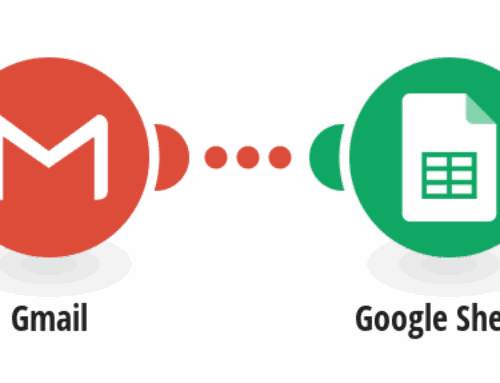If you are serious about automating technology projects and growing your company, then you’ve probably heard of or at least considered using a platform that specializes in low-code automation. These platforms make it easy to build software by allowing users to simply drop source code files into a repository and the platform takes care of the rest.
They help you focus on developing great products without having to worry about deployment or maintenance. If you’re looking to automate technology projects at scale, then you should consider using a low-code automation platform. In this blog post, we’ll walk through some important considerations when choosing your low code automation platform so that you can easily set yourself up with the right tools for the job.

What is Low Code Automation?
Low-code automation platforms work on the same principle as regular code automation tools, but instead of building applications from scratch, they make use of existing code and components that you probably already have lying around. Because the platform takes care of all the heavy lifting, you can focus on developing great products without having to worry about deployment or maintenance.
A great example of this can be found in the business applications areas, where integration with accounting software can make your job easier. It can also be used to great effect in the software development field, where a complete software stack can be automated with a few lines of code.
Tips for Choosing Your Low Code Automation Platform
To get the best out of your low code automation platform, it’s important to evaluate its suitability for your particular project. You should do this by looking at the following factors:
Flexibility
Automation platforms that are built solely for automated tasks tend to offer a limited number of customization options. With most platforms, you can target a single industry or a single use case, but there are very few with the versatility needed to run on a large scale. Most automation platforms lock you into a specific programming language or toolchain. With this in mind, if you’re looking for the ability to target multiple industries or use cases, you may need to pick a platform that supports a wider range of programming languages and toolchains.
Ease-of-Use
One of the most important factors when choosing your low code automation platform is the ease of use. This will determine how easy it is to set up and use. Many automation platforms are extremely easy to use, but they don’t offer all the features that a full-blown automation platform should. For example, if you’re building a platform that allows you to build a variety of apps, you might find that the platform itself doesn’t require any special setup. But then again, if you’re using the platform to build a single app, you may want to take special steps to ensure a smooth experience.
Scalability
Another important consideration when choosing your low code automation platform is scalability. The number of projects you can automate with a single tool should be considered. This will help you decide which platform is right for your team.
Automation platforms that are built to scale can help you automate a wide range of tasks, but they also tend to have a limited maximum capacity. This means that you can only automate so many things at once before the platform starts to struggle.
If you’re aiming to automate a large number of tasks, then we recommend looking into platforms that support many automation platforms that allow you to create multiple user roles, and assign users permissions to perform different types of tasks. This can help you scale your automation platform if demand for remote tasks exceeds the platform’s scalability.
Language Options
Another important consideration when choosing your low code automation platform is the language options. This is because most platforms only support a limited number of programming languages and related tools. This can make it difficult to target a large audience with limited options.
On the other hand, some automation platforms allow you to create apps that target a wide range of use cases and target multiple industries or companies at the same time. Because the platform will support your chosen language, you’ll have easier time building apps that work in multiple languages.
This makes it much easier to find customers and get them working with your platform. If you are looking for a platform that offers a variety of programming languages, check out our list of the best programming languages for 2019.
Cost
Last but not least, we recommend checking out the cost of the automation platform itself. The price of the platform is usually based on the features it offers. One of the most important things to consider when choosing a low-code automation platform is the price.
A low-cost solution will usually mean a lower- implementation and could lead to errors and bugs that are harder to track down. This usually means that the more features a platform has, the higher the price. Some automation platforms may allow you to test drive the software before deciding whether or not to purchase it. This helps you save money and time by eliminating any unknown risks involved with using the software outside of the beta period.
One of the most important things to consider when choosing a low-code automation platform is the price. A low-cost solution will usually mean a lower-quality implementation and could lead to errors and bugs that are harder to track down.
Pros of Using a Low Code Automation Platform
There are several benefits to using a low code automation platform, especially if your organization is just getting started with the technology. Using these platforms means you can test out new tech quickly and easily before investing time into learning it. Additionally, these platforms are easy to use and have a friendly UX.
Setting up a low code automation platform can be easy, especially if you’ve used one before. You’ll only need to start your project from scratch and an existing folder.
Cons of Using a Low Code Automation Platform
As with any automation tool, there are going to be instances where you need to break the code. This is something you need to be aware of and prepared for. While it’s important not to rely on breaking the code to catch mistakes, it’s also important to consider how easy it would be for your team to make mistakes.
Besides, there are going to be times when building a product that will be used by many necessitate breaking the code. For example, if you’re building a social media app, you may need to integrate with other platforms that require you to break the code to enable cross-platform capability.
Recommended Low Code Automation Platform
When it comes to choosing your low-code automation platform, you may be wondering which one to use with your other tools and platforms. One of the best low-code automation platforms, Zapier, is a perfect fit for any team that wants to integrate its tools and functions.
Created by veterans of the web, mobile, and email marketing communities, Zapier allows you to create very easy integrations across platforms, technologies, and functions. It makes it very easy to transition your tools and functions between different platforms, as well as other industries and companies.
Conclusion
The low-code automation market is growing rapidly and there is an increasing demand for platforms that specialize in this area. These platforms have proven to be very popular when it comes to code testing and machine learning. The popularity of these platforms is due to their ease of use, scalability, and the option to use them in a production environment.
When choosing your low code automation platform, make sure that you consider the importance of flexibility, ease of use, languages, cost, and scalability. Low-code automation platforms usually provide the best of both of these factors.
Articles You Might Want To Read:
What To Expect in Low Code Automation?








